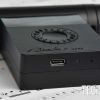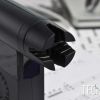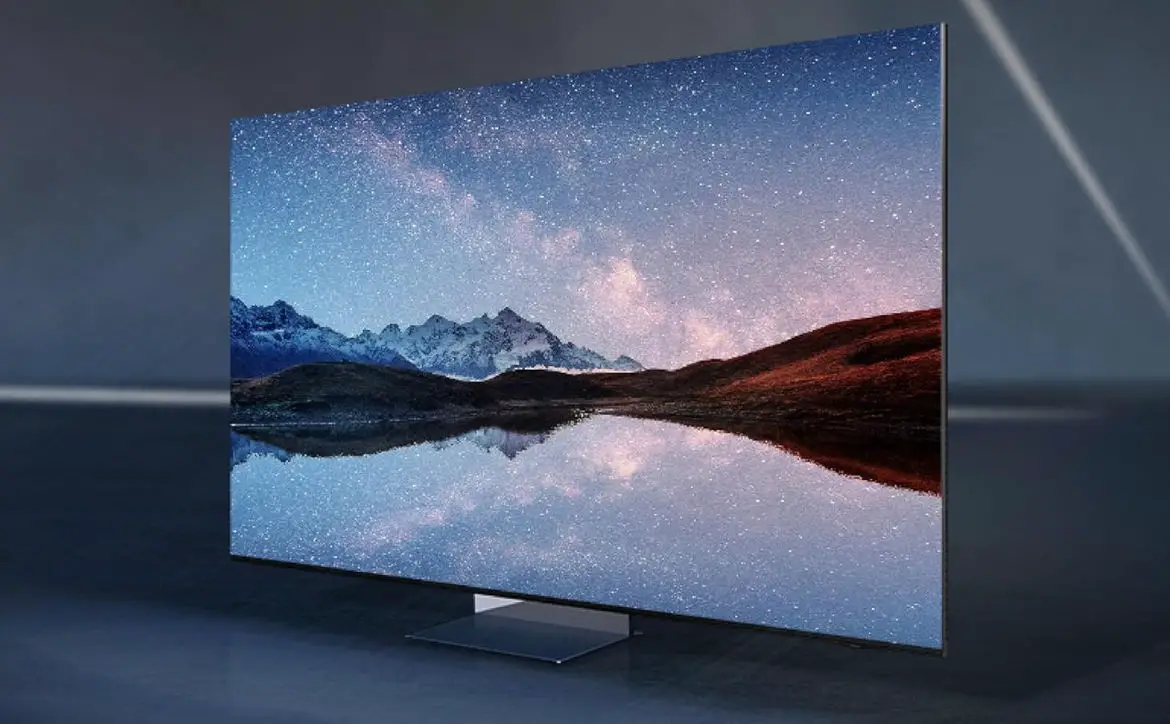 I do play the bass and the guitar but I’m only a casual musician. When I play, it’s for my own entertainment, and occasionally I will play in my church when needed. I own a few tuners and my favorite is a D’Addario Planet Waves tuner that I bought about 12 years ago. I love my Planet Waves tuner and haven’t shopped for a new tuner since I bought it.
I do play the bass and the guitar but I’m only a casual musician. When I play, it’s for my own entertainment, and occasionally I will play in my church when needed. I own a few tuners and my favorite is a D’Addario Planet Waves tuner that I bought about 12 years ago. I love my Planet Waves tuner and haven’t shopped for a new tuner since I bought it.
A few weeks ago I received a Roadie Bass tuner for a review. I was told nothing about it except that it was a bass tuner. Great, I know how tuners work, looking forward to trying it out. I pulled it out of the box and to my surprise, this tuner was more than a bit different from any tuner I’ve ever seen. Read on to find out what is so different about the Roadie Bass tuner.
Specifications
The Roadie Bass tuner has the following features and specifications.
- Weight: 6oz
- Dimensions: 3.6 x 3.1 x 1.2
- Tunes strings up to 140 gauge
- Tunes at speeds of up to 40 rpm
- Frequency detection between 27.5 Hz and 880 Hz
- Over 40 preset alternate and open tunings
- Create your own tunings
What’s In The Box
- Roadie Bass guitar tuner
- USB charging cable
Design
The physical appearance of Roadie Bass resembles an old iPod with a round barrel sitting on top, or maybe an early Star Trek Phaser with a really wide handle. Either way, the shape of the Roadie Bass is a bit odd. The handle portion is what looks like an old iPod and houses the screen, a dial, a selector/on/off button, a light, and the charging port. The tuning mechanism is the barrel-shaped portion, and this is where the tuning peg grip and an LED that lights blue while tuning and green when the string is tuned can be found. There is also a light on the bottom that indicates that the unit is charging.
At the end of the barrel is the mechanism that grabs the tuning pegs (or machines) and tunes the strings. It has a tapered opening for accommodating different sized instruments pegs and feels as if it is made of hard plastic. It seems rather sturdy, and I did not notice any flex while it was tuning my bass. Even though the exterior of the Roadie Bass is made of plastic, it still maintains a quality look and feel. I do wish the handle was a bit more ergonomic, the whole thing is a bit unwieldy when held.

Ease Of Use
I started to use the Roadie Bass before I even read the instruction or downloaded the app. First thing I did was add an instrument and named it. Just a 4 string bass in standard tuning. You can select 4, 5, or 6 string bass. There are also 4 tuning presets already loaded into the Roadie Bass, standard, drop D, tuning in fifths, and half step down. And that is just for the bass guitar. There are also presets for tuning acoustic guitar, electric guitar, classical guitar, ukulele, concert ukulele, tenor ukulele, baritone ukulele, mandolin, and banjo. Who knew there were that many types of ukulele? And each one of these instrument presets has their own tuning presets. On top of that, the included app gives you the flexibility to create your own tunings should you need more. Wow, talk about options! And this was all very easy to use, first press the selector button to turn on the Roadie Bass, then use the dial to navigate to the menu you want, and finally go into the menu with the selector button.
There is a wind/unwind option that you can utilize when restringing your instrument. You can change the name of your Roadie Bass, you can have it run a self-test on all its functions, there is a front LED that you can have turned on while tuning (useful in low-light situations). To turn off the Roadie Bass, just hold down the selector button for a few seconds.
Performance
I used the Roadie Bass primarily on my bass guitar for standard tuning. I also made use of the dropped D setting and the electric guitar tuning as well. The Roadie Bass performed very well in all the situations that I threw at it. I detuned my instruments, and with the Roadie bass, I was able to get them back in tune in well under a minute for each of them. I also ran a test where I tested the accuracy of the tuning against my old tuner and by playing along with various songs. My old tuner verified electronically that the Roadie Bass was indeed spot on and playing along with songs allowed me to double check the tuning by ear.

Software/App
The Roadie Bass comes with an app as well. The app lets you access the settings on the Roadie Bass much faster. You can add instruments, choose alternate tunings, create your own tunings, and change the Hz for tuning should you need to. There are links to articles you can read on Roadie’s website, tutorials, blogs, and even a help link. One thing I did notice is that the app would not connect to my phone unless I turned off VPN. So if you use a VPN, make a note of that.
Price/Value
The Roadie Bass has a price of $149.00USD. Considering this is an automatic tuner, and the tuning seems to be spot on, that’s not a bad price in my opinion. But it may seem a bit high to some when you can run to your local mega-guitar mart and pick up a basic tuner for $10.
Wrap Up
The Roadie Bass does a great job of tuning stringed instruments. It has flexibility, speed, and precision. I’m sure there will be some out there who think this is the greatest thing in the history of tuning, and I’m also sure some of you will think it’s just another gadget to haul around while performing. What I liked best about the Roadie Bass was that it made for fast tuning while practicing and the fact that there are so many tuning options available. I do think if I were playing a live show I would still prefer an in-line tuner.




















Comments are closed.